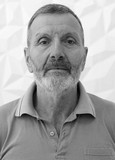Development of strength and power in qualified martial artists using plyometric training
Keywords:
deep jumps, muscle strength and power, isometric muscle contractions, bicycle ergometry, Wingate test.Abstract
Objective of the study was to analyze the effect of deep jumps on the manifestation of power and the generation of strength in qualified martial artists involved in judo and sambo.
Methods and structure of the study. The experiment was attended by 10 athletes specializing in judo and sambo wrestling, with sports qualifications "Candidate for Master of Sports" and "Master of Sports of Russia". In the experimental program, the athletes did deep jumps from a dosed height of 50 cm, followed by long jumps. Each jump was performed with a concentration on achieving maximum effort. The work was carried out serially, five jumps in a series with a rest between series of 2 minutes. The subjects performed this load three times a week. The tests were performed in the laboratory on a Monark bicycle ergometer (Sweden) and a dynamographic simulator.
Results and conclusions. As a result of the training program, there was a significant improvement in such indicators as maximum power (by 7.1%), peak power (by 11.1%), time to reach maximum power (by 22.4%), time to reach 97% of maximum power (by 27.8%). As a result of the work done, the values of the maximum force and the time to achieve it have improved. The plyometric mode of operation can be recommended for inclusion in the training process of athletes in order to develop the maximum power of the alactic anaerobic process of energy supply and improve the speed of its deployment.
References
References
Adamchik Ya.G. et al. Otsenka effektivnosti razminki s ispolzovaniyem pliometricheskikh uprazhneniy i uprazhneniy s progressivnym soprotivleniyem na vybrannyye biomekhanicheskiye i fiziologicheskiye parametry nizhnikh konechnostey [Evaluation of the effectiveness of warm-up using plyometric exercises and exercises with progressive resistance on selected biomechanical and physiological parameters of the lower extremities]. Teoriya i praktika fizicheskoy kultury. 2013. No. 4. pp. 94-99.
Verkhoshansky Yu.V. Osnovy spetsialnoy silovoy podgotovki v sporte [Fundamentals of special strength training in sport]. 3rd ed. Moscow: Sovetskiy Sport publ., 2013. 216 p.
Cavagna G.A. Storage and utilization of elastic energy in skeletal muscle. In R.S. Hutton (Ed.), Exercise and sport sciences reviews. Journal Publishing Affiliates. Santa Barbara, CA: 1977. Vol. 5. pp. 89-129.
Cavagna G.A., & Citterio G. Effect of stretching on the elastic characteristics of the contractile component of the frog striated muscle. Journal of Physiology. London, 1974. No. 239. pp. 1-14.


